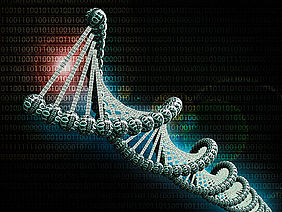Bits are really "light"! They are not weightless, as you might think. Depending on the type of media you use to store them each bit has a specific "weight", as an example storing a bit in a flash memory involves some 10,000 electrons and although an electron is really lightweight (9.10938215 ×10−31kg) it still weights a little bit and even in a magnetic disc the energy involved in a storage containing 10101010 vs 11111111 vs 00000000 is different and energy is equivalent to mass, and as a mass it has a weight, depending on where you are. Anyhow, these numbers are so minuscole that the weight of a bit, or of a GB, is for all practical purposes equivalent to 0, or weightless.
The bits start to weight in a perceptible way when you are considering the medium used to store it. A hundred GB flash chip may weight a few grams. Still pretty light but what if you were considering storing 100PB? That would require some few million grams, that is ... some tons! Well, now you would realised the weight of data!
Researchers at Columbia University and the New York Genome Centre have found a way to store bits using a strand of DNA up to its theoretical limit in terms of storage capacity. That would allow storing 215PB (million of GB) in just one gram of matter.
This is quite impressive. It also provides an amazing view on the amount of data that DNA can potentially store. Kudos to Mother Nature!
In order to store data in DNA form you need to convert your 0s and 1s into base pairs (ACGT) and then assemble them to form a DNA strand. This correspond to the writing process. To read your data you can use an existing DNA sequencer.
Of course having such a tremendous storage density is great but it is just a "piece" in the storage puzzle. Writing and reading a DNA strand is incredibly slow if you were to compare this process to the read and write a flash drive (or any other storage medium we are using). So do not expect to swap your flash pen with a DNA strand in the future.
There may be, however, in the third decade in this century some applications of this technique. The researchers pointed out that in the future the storage of huge amount of data that are seldom accessed in the Cloud may benefit from this technique. One of the nice property of DNA storage is that it is very resilient. Our best storage medium have a lifetime of a few hundred years at most, with DNA you have million years of lifetime and that may be a gift we leave to future generations.







